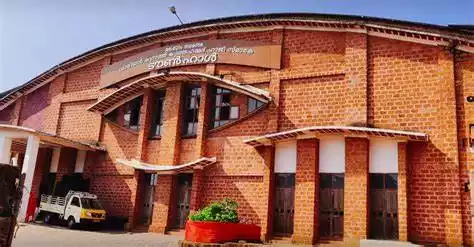Discovering Malappuram: A Comprehensive Guide
Introduction to Malappuram
Malappuram, a district located in the southern Indian state of Kerala, is renowned for its rich cultural heritage, diverse demography, and scenic landscapes. Bordered by the Arabian Sea to the west and the Western Ghats to the east, Malappuram offers a unique blend of natural beauty and cultural vibrancy. This article delves into the various facets of Malappuram, including its demography, culture, geography, cuisines, history, notable poets and authors, and administration.
Demography of Malappuram
Malappuram is one of Kerala's most populous districts, with a population that exceeds 4.1 million. The district is characterized by a diverse population comprising Hindus, Muslims, and Christians. The Muslim community forms the majority, followed by Hindus and Christians. This diverse demographic makeup contributes to the district's rich cultural tapestry and communal harmony.
Population Statistics
- Total Population: Over 4.1 million
- Major Communities: Muslims (70%), Hindus (27%), Christians (3%)
- Languages Spoken: Malayalam (official), Arabic, English
Cultural Richness of Malappuram
Malappuram is a cultural melting pot, where traditions and modernity coexist harmoniously. The district is known for its festivals, traditional music, dance forms, and religious practices.
Festivals
- Eid-ul-Fitr and Eid-ul-Adha: Major Muslim festivals celebrated with great fervor.
- Onam: A significant Hindu festival marked by the traditional feast (sadhya), boat races, and flower decorations.
- Christmas: Celebrated by the Christian community with carols, feasts, and midnight masses.
Traditional Arts and Music
- Oppana: A traditional dance form performed during Muslim weddings.
- Duffmuttu: A popular Muslim folk art involving rhythmic drumming.
- Mappila Pattu: Traditional Muslim songs that narrate the history and culture of the Mappila community.
Geography and Topography of Malappuram
Malappuram's geography is diverse, encompassing coastal areas, midlands, and highlands. The district features a mix of beaches, rivers, and hills, making it a picturesque locale.
Key Geographical Features
- Coastline: The western boundary of Malappuram is lined with sandy beaches along the Arabian Sea.
- Rivers: Major rivers like the Chaliyar, Kadalundi, and Bharathapuzha flow through the district, providing water resources and scenic beauty.
- Western Ghats: The eastern part of the district is marked by the rugged terrain of the Western Ghats, known for their biodiversity and trekking opportunities.
Notable Natural Attractions
- Nilambur Teak Plantations: Home to some of the oldest teak plantations in the world.
- Kadalundi Bird Sanctuary: A haven for bird watchers, located near the Kadalundi River.
- Adyanpara Waterfalls: A popular tourist spot known for its natural beauty and tranquil environment.
Culinary Delights of Malappuram
Malappuram's cuisine is a reflection of its cultural diversity, with influences from the Muslim, Hindu, and Christian communities. The food is known for its rich flavors, generous use of spices, and traditional cooking methods.
Signature Dishes
- Pathiri: A traditional flatbread made from rice flour, typically served with meat curry.
- Mutton Biryani: A fragrant rice dish cooked with mutton, spices, and herbs.
- Thalassery Chicken Curry: A spicy and flavorful chicken curry often paired with ghee rice or pathiri.
Snacks and Sweets
- Unnakkaya: A sweet snack made from ripe bananas, coconut, and sugar.
- Ari Unda: A traditional sweet made from rice, jaggery, and coconut.
- Chatti Pathiri: A layered pastry with sweet or savory fillings, resembling a lasagna.
Historical Significance of Malappuram
Malappuram has a rich historical legacy that dates back to ancient times. The district has witnessed the rise and fall of several dynasties and has been a center of trade, culture, and learning.
Ancient and Medieval History
- Chera Dynasty: Malappuram was part of the ancient Chera Kingdom, which played a significant role in South Indian history.
- Vijayanagara Empire: The region came under the influence of the Vijayanagara Empire during the medieval period.
- Zamorin of Calicut: Malappuram was under the rule of the Zamorin of Calicut, who controlled the trade routes and had significant influence over the region.
Colonial Era
- British Rule: The district was a center of resistance against British colonial rule, with several uprisings and movements spearheaded by local leaders.
Notable Poets and Authors from Malappuram
Malappuram has produced several notable poets, authors, and scholars who have contributed to Malayalam literature and cultural heritage.
Prominent Literary Figures
- O. V. Vijayan: A renowned novelist and cartoonist known for his seminal work "Khasakkinte Itihasam" (The Legends of Khasak).
- V. C. Sreejan: A prominent poet and critic known for his contributions to contemporary Malayalam literature.
- K. A. Kodungallur: A celebrated poet and writer whose works reflect the socio-cultural milieu of Malappuram.
Administrative Structure of Malappuram
Malappuram district is administratively divided into multiple subdivisions, taluks, and panchayats. The district administration is responsible for implementing government policies, maintaining law and order, and overseeing development projects.
Administrative Divisions
- Subdivisions: Malappuram is divided into several administrative subdivisions, including Ernad, Perinthalmanna, and Tirur.
- Taluks: The district comprises multiple taluks such as Nilambur, Tirurangadi, and Ponnani.
- Panchayats: Numerous village panchayats manage local governance and development activities at the grassroots level.
Key Administrative Offices
- District Collectorate: The District Collector heads the district administration and coordinates various government departments.
- Police Department: Ensures law and order, led by the District Superintendent of Police.
- Municipalities: Urban areas are managed by municipalities that oversee civic amenities and infrastructure development.
Suggested Diagram: Administrative Structure
Conclusion
Malappuram, with its rich cultural heritage, diverse population, and scenic landscapes, stands as a testament to the harmonious coexistence of tradition and modernity. From its historical significance and vibrant festivals to its delectable cuisine and notable literary contributions, Malappuram offers a unique and enriching experience for residents and visitors alike. As the district continues to progress and develop, it remains deeply rooted in its traditions, offering a glimpse into the rich tapestry of Kerala's cultural heritage.
